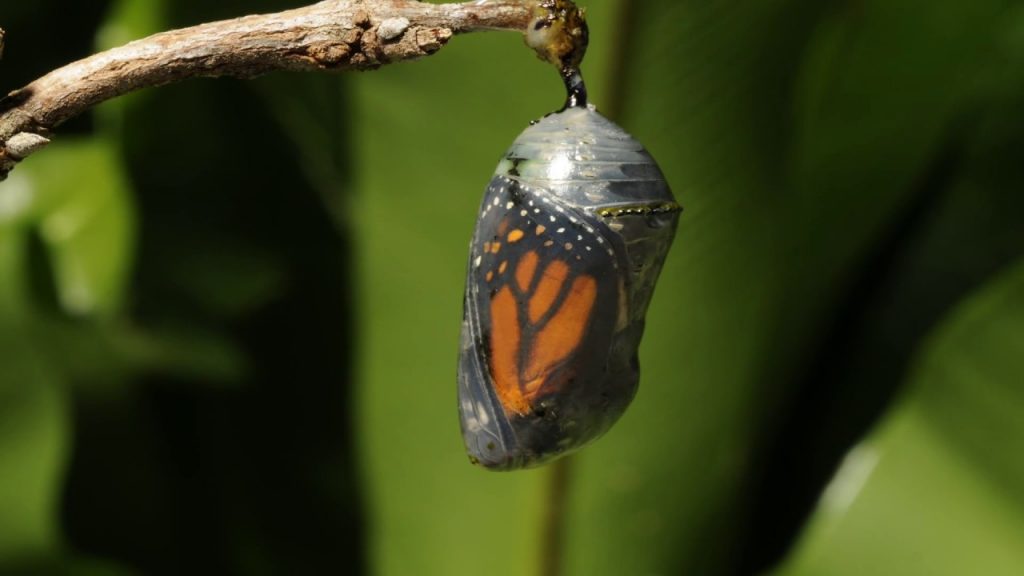Butterfly Pupa (Chrysalis)
What does a Butterfly Pupa (Chrysalis) look like
During the larval stage of the butterfly life cycle, the caterpillar or larva feeds profoundly on plants, thereby growing longer and plumper. A full-grown larva stops eating and pupates, i.e., molts into a protective casing called a chrysalis (moths spin a cocoon). Within the chrysalis, the caterpillar’s body undergoes a radical transformation, eventually coming out as an adult butterfly or moth. Depending on the species, the chrysalis can be solid or web-like, soft or hard, and of any color.
Where to find Butterfly Chrysalis
Butterfly chrysalises or moth cocoons can be found under the leaves or branches of plants that exist near water bodies. They are also found hidden in underground litters, burrows, or rolled leaves.
How does a Caterpillar transform into a Butterfly inside its Chrysalis
After forming its chrysalis, the caterpillar starts dissolving some of its tissues by releasing digestive enzymes. There exist groups of cells, called imaginal discs, which remain unaffected by the digestive process. Once all the tissues except the imaginal discs have been digested, the discs use the surrounding protein to fuel the cell division process required for the formation of eyes, legs, wings, antennae, and other body parts of an adult butterfly. However, some muscles, tissues, and parts of the nervous system of the caterpillar are preserved in the butterfly or moth.
Video: Butterfly coming out of Chrysalis
How long does a Butterfly Stay in its Chrysalis
Most butterfly species stay in their chrysalis (pupa stage) for about 5-21 days before coming out as an adult. In places with harsh conditions, such as deserts and mountains, butterflies may continue to stay inside their chrysalis until the weather improves. The environment should be ideal for feeding on flowering plants and laying eggs.




